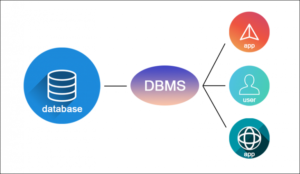Back to: Computer Science JSS 3
Welcome to class!
In today’s class, we shall be talking about the forms of databases. Please enjoy the class!
Database – Forms of Database

Databases are the silent heroes of the digital age, silently organizing and storing vital information that fuels our world. But just like superheroes have diverse powers, databases come in different forms, each tailored for specific needs. Let’s embark on a journey to understand these various database “forms” and unlock their unique strengths!
1. Relational Databases

Imagine filing cabinets where folders connect data like puzzle pieces. That’s the essence of relational databases! Organized in tables with rows and columns, they excel at:
Structured Data: Perfect for numbers, dates, and text, their rigid structure keeps things organized.
Relationships Matter: Links between tables allow flexible queries, like finding customers who bought certain products.
Widespread Adoption: The industry standard, most software and tools understand their language.
Think of libraries, bank accounts, or online stores – relational databases keep them humming!
2. NoSQL Databases
Not a fan of strict rules? NoSQL databases are the rebels of the data world. They let you store data in various formats, like documents, graphs, or key-value pairs, offering:
Unstructured Data: Perfect for images, social media posts, or sensor readings, their flexible structure adapts to messy data.
Scaling Up Quickly: Easily handle massive data volumes without rigid columns or relationships.
Speed Demons: Often blazing fast when dealing with specific tasks, like real-time analytics or social media feeds.
Imagine social media platforms, e-commerce recommendations, or real-time traffic systems – NoSQL databases power their dynamism!
3. Hierarchical and Network Databases
Remember cassette tapes? These database forms are the “oldies but goodies” of the data world. Think of them as pioneers who paved the way for modern formats:
Hierarchical Databases: Imagine data nested like Russian dolls, with parent-child relationships. Used in early airline reservation systems.
Network Databases: Picture data connected like a spiderweb, with multiple relationships between items. Used in early engineering design systems.
While not as common now, they still serve niche applications and offer valuable historical insights.
4. Cloud Databases
Think of these as databases taking a vacation on the internet! They store data on remote servers, offering:
Accessibility Anywhere: Access your data from any device with an internet connection, no matter your location.
Scalability on Demand: Easily adjust storage and processing power as your needs grow, without physical limitations.
Shared Responsibility: Leave the maintenance and security to the cloud provider, freeing you to focus on your core business.
Imagine online collaboration platforms, streaming services, or large-scale e-commerce operations – cloud databases keep them connected and scalable.
Remember: Choosing the right database form depends on your data type, relationships, performance needs, and budget. It’s like picking the perfect tool for the job!
We have come to the end of today’s class. I hope you enjoyed the class!
In the next class, we shall be discussing database practical.
In case you require further assistance or have any questions, feel free to ask in the comment section below, and trust us to respond as soon as possible. Cheers!
Question Time:
Section A (Multiple Choice):
- Which of the following is NOT a characteristic of a relational database?
- a) Structured data organization
- b) Flexible scaling
- c) Relationships between tables
- d) Widespread industry adoption
- NoSQL databases are best suited for:
- a) Bank account information
- b) Social media posts
- c) Airline reservation systems
- d) E-commerce product catalogs
- Cloud databases offer the advantage of:
- a) Offline data access
- b) Unlimited storage capacity
- c) Shared maintenance responsibility
- d) Fixed computing resources
- Hierarchical databases were commonly used in:
- a) Real-time traffic systems
- b) Early online shopping platforms
- c) Modern social media networks
- d) Engineering design applications
- Which of the following factors is LEAST important when choosing a database form?
- a) Data type and structure
- b) Relationship complexities
- c) Budget constraints
- d) Operating system compatibility
